As a comics fan I have always wondered what it would be like to be a publisher, to have my own imprint where I was the one who made all the decisions on what was put out there into the world.
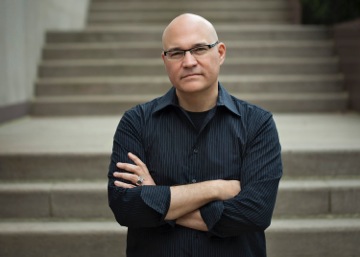
Chris Staros is living that dream. Chris is the editor and publisher of Top Shelf Productions, which he founded in 1997 with Brent Warnock. Before that, Chris published his own fanzine, The Staros Report, which was “a guide to where all the good stuff was being published before the Internet and people started posting that information.”
Top Shelf is known for the beautiful production of their books and the high quality talent they work with. Staros and his team have nurtured the talents of Jeffery Brown, James Kolchaka, Matt Kindt, Renee French, Nate Powell, and Robert Venditti and brought to the world Alan Moore’s From Hell, Craig Thompson’s Blankets (One of the best graphic novels I have ever read.), Alex Robinson’s Box Office Poison, and Jeff Lemire’s Essex County, to name but a few. The merits of all the hard work by the talent and Top Shelf have garnered them Eisner Awards, Harvey Awards, and Ignatz Awards.
I was lucky enough to have a phone conversation with Chris Staros from his office in Georgia.
John Kost: Where do graphic novels fit into the larger conversation on literature and art?
Chris Staros: In the world we live in where the 5,000 word article has been replaced with the 400-word article or a 140-character tweet on something, we’re moving into a faster paced, visual, world. The graphic novel can communicate some profound literary concepts to a person visually, be stimulating and be a quick read compared to a prose novel that might take a week to read while the graphic novel might take a couple of days, but have the same impact on you. It makes sense in today’s world to pay attention to graphic novels. They are growing all the time and it is nice to see that people know what you are talking about when you mention graphic novels. I think it fits right in and gets a slightly wider audience every year.
JK: How has the comics industry changed since you started working in the field?
CS: Over the course of the 20 years, several things have changed. One, in the early years we were trying to revive comics as a literary medium so we spent a lot of time as publishers trying to redeem comics as a literary art form in the public’s mind and to reintroduce the American public to the graphic novel. In the late 90’s there was starting to be an awakening to that, all the articles at the time were — Biff! Bam! Pow! Comics aren’t for kids anymore — we had to spend a great deal of time explaining what a graphic novel is. Since the mid 90’s comics have gotten cool. Now they are pretty widely read by men and women. Now everybody knows what a graphic novel is, most people know that movies come from graphic novels. We have also entered a new age recently where things are sold and showcased digitally. You can print nice editions of books for posterity and sell them digitally too. You have two avenues to reach audiences with.
JK: What is the first comic book you remember as a kid?
CS: I never read comics as a kid. I was a hard rock and heavy metal guitarist and huge Elvis Presley fan since I was four, so music was the center of my world. I remember that a lot of my friends read comics, but when I was little I was under the impression that books with pictures in them were for kids. I was in such a rush to grow up I just tried to read the biggest prose books I could, like The Lord of the Rings, Dune, and Shogun. I kind of missed the comics wave as a kid. So when I came into comics as an adult, I came in with some really fresh eyes because I was pretty well read in literary fiction and non-fiction. I brought to comics the idea that comics were not all superheroes, that they could be more. So I was ultimately attracted to a lot of the independent stuff that was being done like Love and Rockets, Eightball, and things being done at Fantagraphics and Drawn and Quarterly.

JK: What are some of the challenges that independent comic book publishers currently face?
CS: The problem for independent publishers in general is distribution, getting people to pay attention to what you do and surviving on the relatively small print runs on the majority of your titles. It’s cash flow, profit and loss, things you do not want to think about in the art world. You just want to do things for art’s sake and while we do put art before commerce with the decisions we make, we still have to shore everything up cash wise, pay of our printers and such and get ready for the next year. In our case, we’re a boutique house, we’re a literary house, we specialize in things that have very unique art styles and have a lot of subtext, and a lot of heart. We do not do licensed stuff like G.I. Joe or Star Wars, we actually like to develop stuff from the ground up and discover new cartoonists and introduce them to the world.
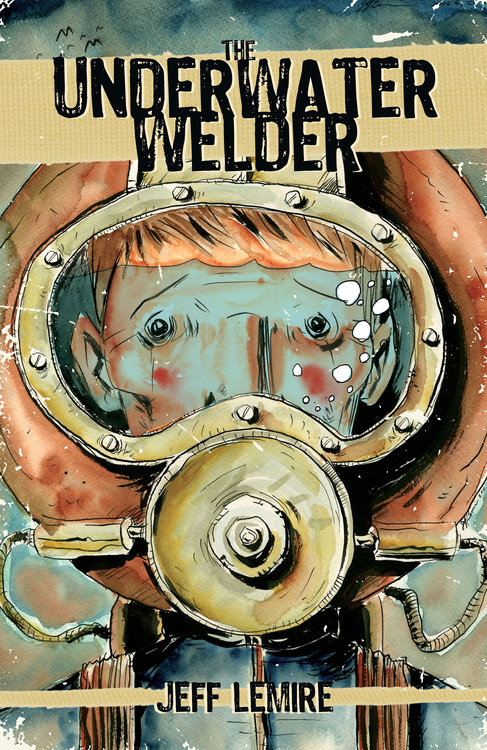
We have an uphill battle with most everything we do, trying to get distribution and get people into what we do. That being said we have had triumphs over the years introducing people like Craig Thompson to the world with his book Blankets, Jeff Lemire with Underwater Welder and Essex County and The Surrogates by Robert Venditti. We have taken people who were not very well known and put out great books by them and beat people over the head with them until they caught on because we believed in them so much.
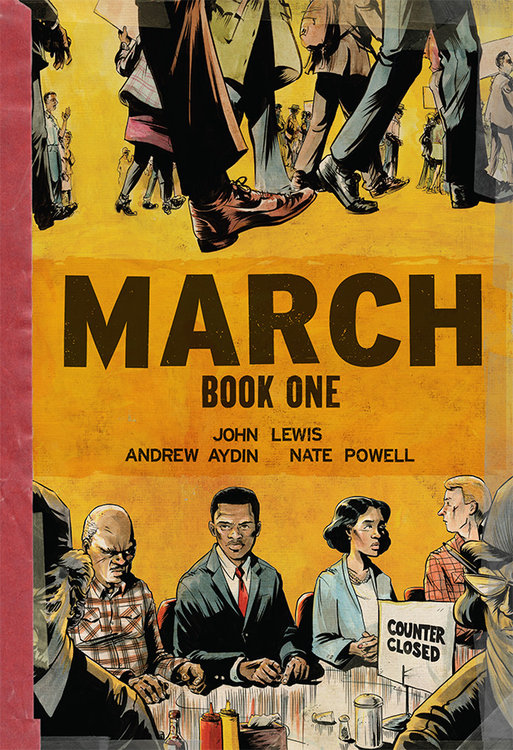
JK: What is the story behind March: Book 1?
CS: Congressman John Lewis is from Georgia where Top Shelf is also located and we met through his co-writer Andrew Aydin, who had the idea of telling the congressman’s biography in graphic novel form. Interestingly enough when John Lewis was young he read a comic called Martin Luther King and the Montgomery Story which was published in 1958 and was part of the inspiration to get Congressman Lewis involved in the Civil Rights movement. When the idea we do his story in comics form was presented he loved it. He knew that it would be a way to get the message of the Civil Rights movement out to a whole new audience, an young audience; the same way a comic book had been motivational to him as a young man. Congressman Lewis and Andrew turned in a very good first draft and I searched around for artists and settled on Nate Powell, an amazing illustrator. Since that time the three of them and Top Shelf as a team have worked tirelessly to promote the book, to get the message of the Civil Rights movement out there and John Lewis’s personal struggle through that time. The word has gotten out, people noticed and we were very honored to receive that award.
JK: What is the collaborative process like for you as an editor/publisher?
CS: Generally, as the editor of the line, I am the person that the creators deal with, creatively speaking, as they go through their process. The relationship with various creators is very different. Some creator’s stories come in and it is perfect and we do not have to change anything. Other creators send stuff in progress and I might have a hand giving feedback on a script early on and as they pencil it give more feedback. They make changes at each step of the process. I don’t insert myself just to insert myself. It’s always a collaborative process. We discuss things. Sometimes we agree to make changes, sometimes we don’t. Generally it’s only if things need tweaking that we talk it through, and if we agree a change needs to be made they go ahead and change it. Everybody brings something different to the table. Some bring the whole package; they write well, they draw well, they design and package well. In some cases they are better artists than storytellers and we work on the story with them. Other creators may be good on the interiors of books but not packaging, so we bring in our designers to help package the book so that the covers and the lead in and lead out pages all have a certain style that fits our line and their desires as well. We play to everybody’s strengths and work as a team to get the best thing out there.
JK: Do you have any good Alan Moore Stories you can share?
CS: Actually, V for Vendetta (written by Alan Moore) was the graphic novel that got me interested in comics as a literary art form and made me realize the potential of words and art put together could be and how under-utilized the comics medium had been in the past. That book inspired me 20-25 years ago to get involved in comics and I never suspected that two to three year later I would be working with Alan on From Hell, Lost Girls, The League of Extraordinary Gentlemen, and all the other great projects we worked on.
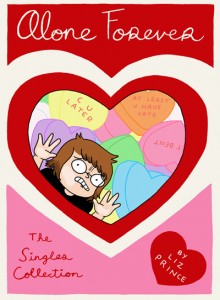
CS: More of the latter, I love all of our children to death. Brad and I together decide what we are going to publish and we always believe in what we publish. Some of them get better public reception and we will push those very hard. The truth is that we wish all of our little darlings do just as well and get the audience they deserve. We do love all of them.
JK: What led Top Shelf to release graphic novels digitally and Digital Rights Media (DRM) free?
CS: We took a very aggressive stance to embrace the digital world and not put it off. When you go back and look at the music industry’s hesitation to go digital with their work they just ended up with a lot of bootlegging going on. They could have just been selling their stuff at fair prices for what the market would bear. So we decided let’s jump in on it now and offer our product in both forms and see where the chips may fall. It turns out that the digital sales have not eaten into print sales. The digital sales have just helped everything, providing another outlet and revenue stream for us. It has brought more awareness to what we are doing and in some cases even increased print sales. Recently we offered a few of our books DRM free on our website, which means that you actually own the files and store them on your computer. You own the book. DRM is the security put in place when you buy things from places like Amazon and Google so you are not able to share those files. With DRM files you can port them over to whatever device you want, you can give them to whomever you want. Yes, they are easier to bootleg, but the market has shown that people are willing to pay. It’s an experiment and it’s the way of the future and we are confident that everything will work out fine.
JK: What is next for Top Shelf?
CS: Like every year we dedicate a portion of our schedule to our big guns like Alan Moore and Craig Thompson, a third of our schedule to people we have had long term relationships with and a third to brand new talent that we are just discovering and doing new things 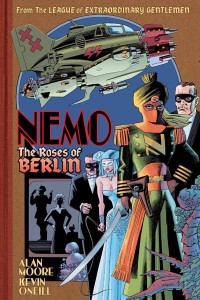
JK: Elvis. Dead or Alive?
CS: Unfortunately, Elvis has left the building, but we as Elvis fans keep him alive in our hearts all the time. He has definitely not passed away to us in that sense, his music is alive, and the community is alive. He’s still alive in our heart’s that’s for sure.
